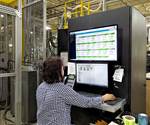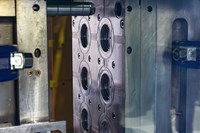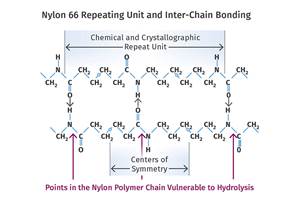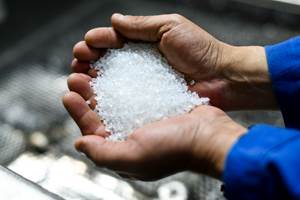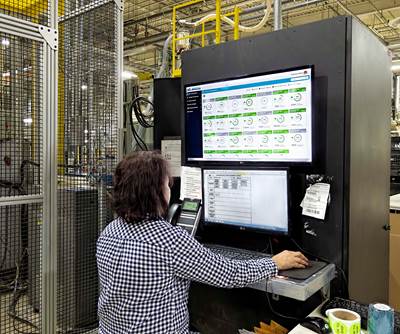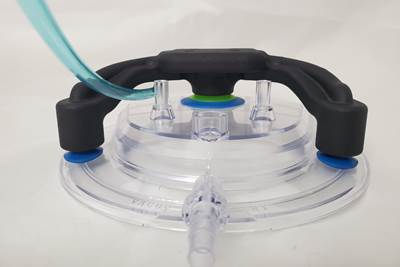Tags To Climb...Maybe Twice
Despite weak prices in all major-volume thermoplastics, producers of PE, PP, and PS, are hoping to move tabs up once or even twice more before the end of the year.
Despite weak prices in all major-volume thermoplastics, producers of PE, PP, and PS, are hoping to move tabs up once or even twice more before the end of the year. PVC suppliers are hoping prices have hit bottom for now. Engineering resins are a different story, with tight supplies helping producers get double-digit increases.
Hikes defy PE softness
Polyethylene prices are going down, but suppliers are still attempting to squeeze out two successive increases before the year is out. PE market prices fell 1¢/lb in September, after a 3¢ dip in August. That leaves PE tabs 3-5¢ lower than at the start of the year, with film grades generally taking the biggest hit. Still, two 3¢/lb price hikes are pending. The first was nominally effective in September, which means Oct. 1 and Nov. 1 for customers with contract protection. The second 3¢/lb increase, nominally for Nov. 1, probably won’t have any real impact before December. It is backed by all major suppliers.
Meanwhile, DuPont Packaging & Industrial Polymers will raise prices of ethylene copolymers and polyolefins by an average of 8¢/lb on Nov. 1. They include Bynel adhesive resins, Elvaloy and Fusabond resin modifiers, Elvax EVAs, Nucrel acid copolymers, and Surlyn ionomers.
Contributing factors: Processors are working off inventories as the end of the year approaches, but softer resin prices derive mainly from new PE capacity that has unbalanced supply and demand. Resin capacity utilization is expected to drop next year to an average level of 83% to 85%.
On the other hand, rising feedstock costs are pushing ethylene prices up. Ethylene contracts held at 30.5¢/lb in September, but were set to rise 1 to 2¢ in October. Suppliers foresee no weakening of ethylene prices in the near future, and further increases in tandem with energy costs are possible.
PP price hike emerges
Polypropylene resin tabs had stabilized through most of October, following a dip of 1 to 2¢/lb in September. But all major suppliers announced hikes of 2 to 3¢/lb for Nov. 1.
Contributing factors: Propylene monomer prices are held to be the main culprit. A 2¢/lb monomer increase was pending in October. Demand growth remains a solid 5 to 6%, but not the double-digit pace of last year. New PP capacity will weigh heavily on prices over the next year. Dow, for example, will bring on 550 million lb by the end of 2000.
PVC continues to slide
PVC resin producers say prices slipped in October and would end the month down 1-1.5¢/lb. Suppliers and processors say prices in the September-October period fell 2.5-3¢.
Contributing factors: At least one resin firm circulated “price stabilization” letters telling processors not to expect further declines while feedstock prices remain high. On the other hand, PVC supply is going up. Shintech will start up a 550-million-lb/yr plant in Addis, La., in December and will ramp up to full production in the first quarter of 2001. Meanwhile, pipe and siding producers say orders have picked up slightly, but are still way below the levels of last spring.
PS makers want 2-5¢ more
Nova, Dow, and BASF announced 5¢/lb polystyrene increases for Nov. 1. Atofina undercut them with a 2¢/lb increase for the same date. But Chevron Phillips had made no move by mid October, putting both the size and the timing of any price hike in doubt.
Contributing factors: If Nova’s third-quarter results are any indication, integrated PS producers are making money on styrene monomer, but not on polymer. Demand was slow from June through October according to both resin suppliers and processors.
Nylon, acetal, PBT, PET
Another industry-wide push is on to raise prices of engineering thermoplastics. Most sources say tight supply is as much to blame for the increases as are rising feedstock costs.
Dow’s 12¢/lb increase on nylon 66 and 6/66 copolymer took effect Oct. 15. Ticona’s 12¢ increase on nylon 66 followed Oct. 16. DuPont implemented a 12¢ increase Nov. 1, while Rhodia Engineering Plastics raised its prices 8¢/lb on the same date. BASF posted a 12¢ nylon hike for Nov. 15.
DuPont and Ticona also want 8¢ more for acetal, PET, and PBT on Nov. 1. Ticona will jump Vectra LCP prices an average of 50¢/lb, and Celstran long-fiber compounds will go up 4 to 6¢/lb.
Related Content
Automotive Awards Highlight Emerging Technologies
Annual SPE Automotive event gives nods to several ‘firsts’ as well as sustainability.
Read MoreWhat is the Allowable Moisture Content in Nylons? It Depends (Part 1)
A lot of the nylon that is processed is filled or reinforced, but the data sheets generally don’t account for this, making drying recommendations confusing. Here’s what you need to know.
Read MoreBASF Highlighting How They 'Make, Use and Recycle Future Solutions'
NPE2024: BASF is using its proprietary computer-aided engineering tool Ultrasim when designing for sustainability in a broad range of industries.
Read MorePrices for All Volume Resins Head Down at End of 2023
Flat-to-downward trajectory for at least this month.
Read MoreRead Next
People 4.0 – How to Get Buy-In from Your Staff for Industry 4.0 Systems
Implementing a production monitoring system as the foundation of a ‘smart factory’ is about integrating people with new technology as much as it is about integrating machines and computers. Here are tips from a company that has gone through the process.
Read MoreLead the Conversation, Change the Conversation
Coverage of single-use plastics can be both misleading and demoralizing. Here are 10 tips for changing the perception of the plastics industry at your company and in your community.
Read MoreBeyond Prototypes: 8 Ways the Plastics Industry Is Using 3D Printing
Plastics processors are finding applications for 3D printing around the plant and across the supply chain. Here are 8 examples to look for at NPE2024.
Read More